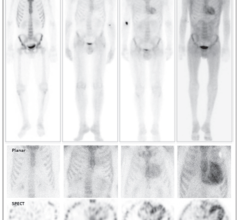Much of nuclear imaging depends on a steady supply of an isotope called molybdenum-99 (Mo-99). A byproduct of nuclear fission, Mo-99 is used to produce another radioactive substance, technetium-99m, which is employed in more than 16 million nuclear imaging procedures every year in the United States alone. These include everything from sentinel node biopsies in cancer surgery to bone scans and cardiac stress tests.
Unfortunately, the supply of Mo-99 and other radioisotopes has been unreliable at best. All of the Mo-99 used in the United States is imported, with the main source being the National Research Universal (NRU) reactor at Chalk River, Ontario, Canada. A shutdown for repairs in May 2009 contributed to a global radioisotope shortage. While the reactor has been back in operation since August 2010, it is scheduled for closure in 2015.
The shortage showcases a critical gap in the supply chain. Although the United States has many domestic reactors that could produce the radioisotopes, they do not have the necessary processing facilities or the capacity to take time away from other projects to produce Mo-99. As a result, new production strategies are desperately needed. For some procedures, there’s simply no alternative, and without a reliable domestic supply of isotopes, nuclear medicine would severely limit doctors’ ability to diagnose and treat many diseases.
Already, some clinicians have switched to using thallium-201, which is still commonly produced and used in heart stress studies. Additionally, physicians are finding it harder to get their hands on iodine-131, another radioisotope that is used to treat thyroid cancer, Graves’ disease and hyperthyroidism. Alternatives for many procedures exist, including computed tomography (CT) and positron emission tomography (PET) scanning, using radioisotopes not made in nuclear reactors, but these have drawbacks ranging from increased cost and greater radiation burden to lower image quality.
New Tracers, New Sources
In response to this ongoing crisis, strategies are being formulated to increase radioisotope production in the United States. These plans include developing a way to produce Mo-99 and other radioisotopes not with a nuclear reactor, but rather with newly designed compact systems. Currently these strategies are in the planning stages, including at Kennewick, Washington-based Advanced Medical Isotope Corp. Should such plans work out, it may be possible to produce a wider variety of radioisotopes in addition to Mo-99, each with its own specific medical application.
One such radioisotope worth producing in greater amounts within the United States is actinium-225, whose daughter bismuth-213 is used for advanced research in therapy of leukemia and other cancers and also holds promise for treating human immunodeficiency virus (HIV). Additionally useful in cancer diagnosis and staging is carbon-11, which has been employed as a radiotracer in PET scans to study both normal and abnormal brain functions related to various drug addictions. It is also used to evaluate diseases such as Alzheimer’s. This past February, a research paper in the journal Archives of Neurology reported the use of carbon-11 PET scans to detect in vivo fibrillar beta amyloid in older adults.
Further tools in the radioisotope toolbox include cobalt-57, which is used for gamma camera calibration, as a radiotracer in research, and as a source for X-ray fluorescence spectroscopy; and copper-64, which has been employed in PET scanning, planar imaging and single photon emission computed tomography (SPECT) imaging, as well as dosimetry studies, and cerebral and myocardial blood flow. It is also used in stem cell research and cancer treatments.
Fluorine-18 is the primary PET imaging isotope and is used for cancer detection, heart imaging and brain imaging. Last year, in a clinical trial at Johns Hopkins University, a PET agent built around fluorine-18 readily and safely distinguished the brains of Alzheimer’s disease patients from those of healthy volunteers. The study authors concluded in the June 2010 Journal of Nuclear Medicine that their agent could lead to better ways to distinguish Alzheimer’s from other types of dementia, track disease progression and develop new therapeutics to fight the memory-ravaging disease.
Other useful examples include germanium-68, which is being used for the study of thrombosis and atherosclerosis, PET imaging, the detection of pancreatic cancer and attenuation correction. Indium-111 is used for infection imaging, cancer treatments and tracer studies, while iodine-123 is used in brain, thyroid, kidney and myocardial imaging, cerebral blood flow and neurological disease. Its close relative, iodine-124, meanwhile, is a radiotracer used in PET imaging and to create images of the human thyroid. Its other treatment uses include apoptosis, cancer biotherapy, glioma, heart disease, mediastinal micrometastases and thyroid cancer.
Iodine-131 is useful in the diagnosis and treatment of thyroid disease, including cancer, while strontium-82 and its daughter rubidium-82 are used as a myocardial imaging agent for the early detection of coronary artery disease, PET imaging and blood flow tracers. Finally, as mentioned earlier, thallium-201 is used in clinical cardiology, heart imaging, myocardial perfusion studies and cellular dosimetry. And this abbreviated list barely does justice to the variety of potentially useful isotopes.
Editor’s Note: Jim Katzaroff is chairman and CEO of Kennewick, Washington-based Advanced Medical Isotope Corp. (www.isotopeworld.com). The company is engaged in the production and distribution of medical isotopes. He believes it is a moral imperative to provide an adequate supply of life-saving medical isotopes on American soil. He said doing so will save tens of millions of dollars for the healthcare market, and the lives that might ultimately be saved might make it a worthy endeavor. He can be reached at jkatzaroff@isotopeworld.com.


 March 25, 2025
March 25, 2025 








